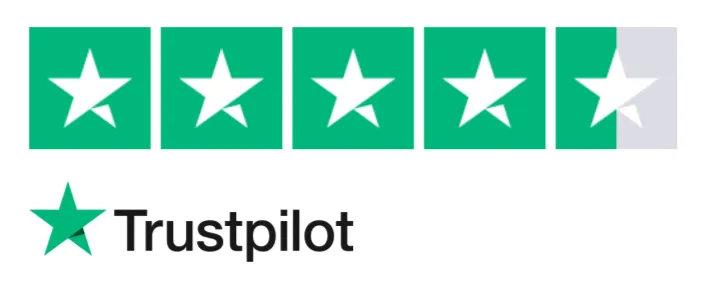Manual data entry has long been a frustrating part of everyday business operations. It’s slow, repetitive, and error-prone and for many teams, it’s a daily productivity drain. Every hour spent keying in invoice data or copying customer info from emails into spreadsheets could be spent on more valuable work. Even worse? Manual entry opens the door to costly errors that impact reporting, billing, and customer satisfaction.
The good news? It doesn’t have to be this way. Thanks to automation and smarter tools, there are now easier and faster ways to manage and move data, without the manual grunt work. This guide walks you through practical strategies to minimize this manual work and boost efficiency.
1. Understand the actual cost of manual data entry
Manual data entry isn’t just time-consuming—it’s expensive. Statistics from Mely.ai illustrate that true manual data processing errors, ranging from 18% to 40%, significantly increase costs. With a 20% error rate, correcting mistakes can add up quickly. For example, processing 100 documents daily could cost $450 in labor, excluding extra costs for fixing errors and the impact on customer satisfaction and reputation.
There’s also the cost of human error. One typo in a customer record or a missed digit in an invoice can lead to billing issues, compliance risks, or lost opportunities. And perhaps the biggest cost? The opportunity cost. Every minute your team spends typing data is a minute they’re not strategizing, innovating, or serving clients.
2. Automate data extraction with smart tools
One of the fastest ways to reduce manual work is to use automation tools to extract and organize data.
Parseur is a standout solution here. It’s a powerful no-code document parsing tool automatically extracting structured data from emails, PDFs, and invoices. Need to pull customer names and totals from invoices? Or extract order details from email confirmations? Parseur handles it all in real time, saving your team weekly hours while reducing human error. It’s especially valuable for businesses handling a high volume of repetitive documents and looking to scale efficiently. Whether you're pulling line items from a supplier invoice or order details from an email, Parseur makes it seamless. You can send this data directly to platforms like Google Sheets, Excel, QuickBooks, or Xero eliminating manual entry. With customizable templates and smart OCR capabilities, Parseur adapts to your workflow without needing technical skills.
Other options include:
- OCR tools like Google Cloud Vision and ABBYY FineReader can convert scanned images into editable text.
- IDP (Intelligent Document Processing) systems for complex document workflows.
Instead of copying and pasting customer order details from emails, set up Parseur to extract that information and send it straight to a Google Sheet automatically and accurately.
3. Connect your tools with integrations
Once your data is digitized, the next step is to make it move smoothly between your systems.
Tools like Zapier, Make, and Microsoft Power Automate help you create workflows that connect apps like CRMs, spreadsheets, email platforms, and project management tools. These platforms act like digital glue, transferring data in real time without you lifting a finger.
A new typeform submission can automatically add a lead to your CRM and send an alert to your sales team in Slack, no manual updates needed.
4. Use digital forms and templates
If your team still collects data via email or paper, it’s time to switch to online forms and standardized templates.
Use platforms like Google Forms, Jotform, or Typeform to capture information in a structured, digital format. This reduces errors and speeds up how data flows into your systems.
Templates also help with consistency. For example, Parseur lets you build parsing templates that recognize and extract data from recurring document types, like invoices or receipts, so you never have to make rules from scratch again.
5. Standardize and simplify your processes
Technology can’t fix a messy process. Before implementing automation, standardize how your team collects and enters data.
Here are a few best practices:
- Use consistent data formats across your forms and tools.
- Batch similar tasks (e.g., enter all invoices once daily) to stay focused and reduce switching costs.
- Define clear guidelines on how data should be captured and stored.
When your workflows are clean and repeatable, automation tools become more straightforward and effective to implement.
6. Centralize your data management
Juggling multiple spreadsheets and apps? Consolidate your data into a single source of truth.
Tools like Airtable, Notion, or Google Data Studio let you centralize, visualize, and report on data in real time. When everything is in one place, your team spends less time searching for info and more time acting on it.
Many of these tools integrate with Parseur, Zapier, and other automation platforms, helping you build an end-to-end data workflow.
7. Train your team on automation basics
New tools only work if your team knows how to use them. Fortunately, you don’t need hours of training to get started. Even a short session on using Parseur or setting up a Zap in Zapier can go a long way.
Encourage your team to:
- Explore automation use cases in their daily work.
- Test tools with small pilot projects.
- Document learnings to build internal expertise.
Empowering your team with the right tools and training creates a culture of efficiency.
Conclusion: Start small, scale smart
Reducing manual data processing isn’t an overnight fix, but it starts with minor changes. Begin by identifying your most time-consuming or error-prone tasks. Then choose one tool, like Parseur, to test. As your confidence and results grow, expand your automation efforts across departments.
With the right approach, you can free up weekly hours, improve accuracy, and make your team happier and more productive. The future of data entry is hands-free, why not start today with Parseur?
Last updated on




